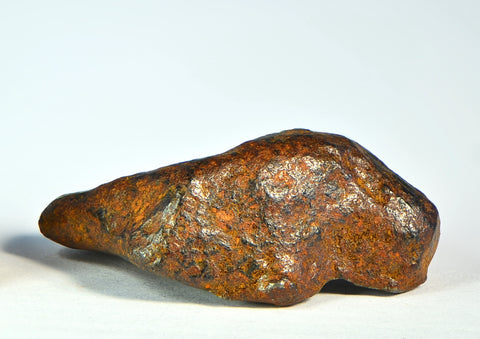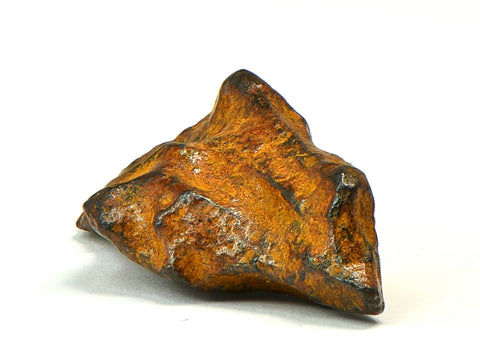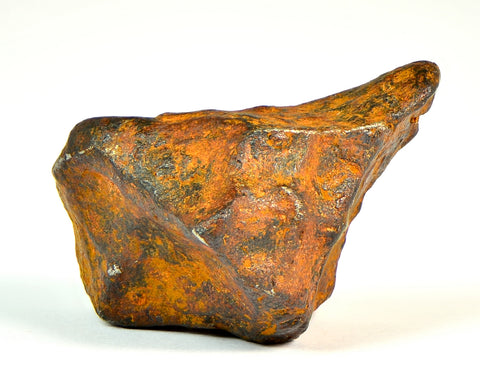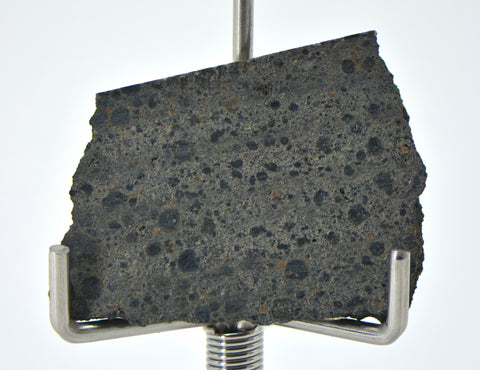3.03g Martian Meteorite Slice I Augite Basalt I NWA 16895

| Northwest Africa 16895 | |||||||||||||||||||||||||
|---|---|---|---|---|---|---|---|---|---|---|---|---|---|---|---|---|---|---|---|---|---|---|---|---|---|
| Basic information |
Name: Northwest Africa 16895 This is an OFFICIAL meteorite name. Abbreviation: NWA 16895 Observed fall: No Year found: 2023 Country: Algeria Mass:  60 g 60 g |
||||||||||||||||||||||||
| Classification history: |
This is 1 of 2 approved meteorites classified as Martian (augite basalt). |
||||||||||||||||||||||||
| Comments: | Approved 15 Nov 2024 | ||||||||||||||||||||||||
Writeup |
Writeup from MB 113:
Northwest Africa 16895 (NWA 16895) Algeria Purchased: 2023 Feb Classification: Martian meteorite (augite basalt) History: Purchased jointly by Ahmed Salek and Omar Bourki in February 2023 from a meteorite dealer in Ouargla. Physical characteristics: The single mass has a dark-gray fusion crust and medium grey interior. No alteration is evident. Petrography: (C. Herd, UAb) Optical and microprobe examination of a polished thin section shows an ophitic texture with compositionally zoned augite intergrown with euhedral plagioclase and ilmenite. Pyroxene grain size is up to 500 μm in longest dimension; plagioclase is typically 100 μm wide and up to 1000 μm long. Ilmenite is typically 100 μm wide and up to 2000 μm long. Areas of mesostasis on the order of 200-400 μm across are present adjacent to ferroan augite; mesostasis minerals include fayalitic olivine, silica, hedenbergite, sulfide, apatite, ilmenite and baddeleyite. Shock features include plagioclase partially converted to diaplectic glass (maskelynite), mosaicism in pyroxene, melt pockets, and thin melt veins. There is no obvious terrestrial alteration. Geochemistry: (C. Herd and A. Locock, UAb) Data obtained by EPMA of carbon-coated thin section: all pyroxene Fs40±16Wo30±7, FeO/MnO=63±7 (n=25), augite cores Fs25±2Wo36±5 (n=8), rims adjacent to mesostasis Fs71±2Wo21.6±0.8 (n=3), plagioclase Ab19±3An80±4Or0.8±0.4, range An75.3-86.5 (n=10). Ilmenite contains up to 1.2 wt% Fe2O3 by charge balance. Classification: Martian (augite basalt). Pyroxene compositions directly overlap with those from other augite basalts such as NWA 7635 and NWA 8159, although plagioclase is more anorthitic and no magnetite was found. Specimens: Type specimen of 24.7 g plus thin section at UAb, main mass with Ahmed Salek and Omar Bourki. |
||||||||||||||||||||||||
| Data from: MB113 Table 0 Line 0: |
|
||||||||||||||||||||||||
We Also Recommend












